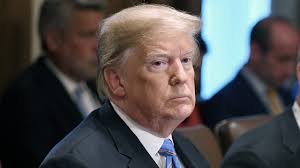Trump Wants Negative Rates Now–and It Could End Up Costing You

What does Donald Trump want? Lower interest rates. When does he want them? URGENTLY.
In a Wednesday morning tweet, he didn’t mince words, urging the Federal Reserve to “get our interest rates down to ZERO, or less.”
By “interest rates,” Trump is most certainly referring to the Fed funds rate, which is the rate banks charge one another to borrow money overnight.
Presidents historically have sought lower interest rates before an election, assuming it would encourage lending, stimulate the economy and endear voters to the candidate. While Trump has mainly stuck to Twitter, other presidents have gotten downright aggressive in their attempts to sway the central bank chief. Lyndon Johnson famously pushed then Fed Chair William Martin up against a wall while trying to persuade him to lower rates.
The idea of negative rates—which have been in place in Europe since 2014 and Japan since 2016—gives bankers indigestion. Research from the Federal Reserve Bank of San Francisco and the European Central Bank demonstrate negative rates have failed to boost growth as intended. Furthermore, a University of Bath study says that the move squeezes commercial bank margins, impacting both loan volumes and profits.
When banks see less profits from loans, they make it up with increased customer fees. All too often it can mean a double whammy on customers: measly interest payments on deposits and higher charges elsewhere.
Another consideration: the lower the rate, the greater the disincentive there is for the bank to loan out money in the first place. If the Fed funds rate goes negative, says Greg McBride, chief financial analyst at Bankrate.com, “What bank is going to lend money to other banks?”
Far from spurring lending and investing, the policy could trigger the opposite intended effect: a liquidity trap.
Fees present another potential unintended consequence of rock-bottom rates. According to a NerdWallet study last year, 53% of Americans have no idea what they will likely pay in bank and investment account fees over their lifetimes. For those who did venture a guess, they seriously low-balled it, assuming they were on the hook for no more than $ 2,244 in investment and banking fees.
The NerdWallet calculation? $ 369,000.
In general, banks want no part of zero rates. Deutsche Bank says that the European Central Bank’s negative benchmark rate (as of today it’s -0.4%) could cost it hundreds of millions of euros this year, according to Bloomberg. On this side of the Atlantic, Charles Schwab said on Wednesday it is laying off 600 people, or 3% of its workforce, part of a in a cost-cutting move intended to better navigate this “increasingly challenging economic environment” of already low interest rates.
“I don’t think we’ll have zero rates in the U.S., but we’re thinking about how to be prepared for it, just in the normal course of risk management,” said Jamie Dimon, CEO of J.P. Morgan Chase at an industry conference this week. How would it respond? By cutting costs, boosting efficiencies, and—wait for it—charge higher customer fees, he said.
History suggests that while fees increase over time anyway, they are particularly sensitive during lower interest rate environments, as was the case during the Great Recession. “We saw a faster pace of increase in the years when the Fed funds rate was near zero and interest margins were tight,” McBride said. “The pace of increase in fees have really moderated as interest has increased and margins have expanded.”
Higher fees puts the most pressure on those who struggle to meet minimum balances requirements, or those who regularly run an overdraft. “There are plenty of consumers that use overdraft as a form of credit,” McBride said. “Incurring an overdraft is a cheaper way to get the rent paid or keep the lights on than making a late payment of skipping a payment.” Already high, such fees run $ 35 or more a pop.
For millions, even paying $ 10 or $ 15 a month in account fees can be a burden when, according to a Federal Reserve study, 46% of adults would be unable to cover an unexpected $ 400 bill.
In any case, if fees rise there are some things you can do to avoid the sting. First, challenge the fees. Banks will sometimes waive them. Also consider so-called online challenger banks. They specialize in efficient operations without physical offices. They typically offer higher interest and lower fees than traditional banks.
More must-read stories from Fortune:
—Deutsche Bank CEO on European Central Bank: “Negative rates ruin the financial system”
—September is historically the worst month for stocks. Will 2019 follow the pattern?
—Why the next recession may feel very different than 2008
—Here’s what it would take to get to “win-win” with China on trade
—”Zombie” companies are on the rise–and they could pose a threat to the U.S. economy




